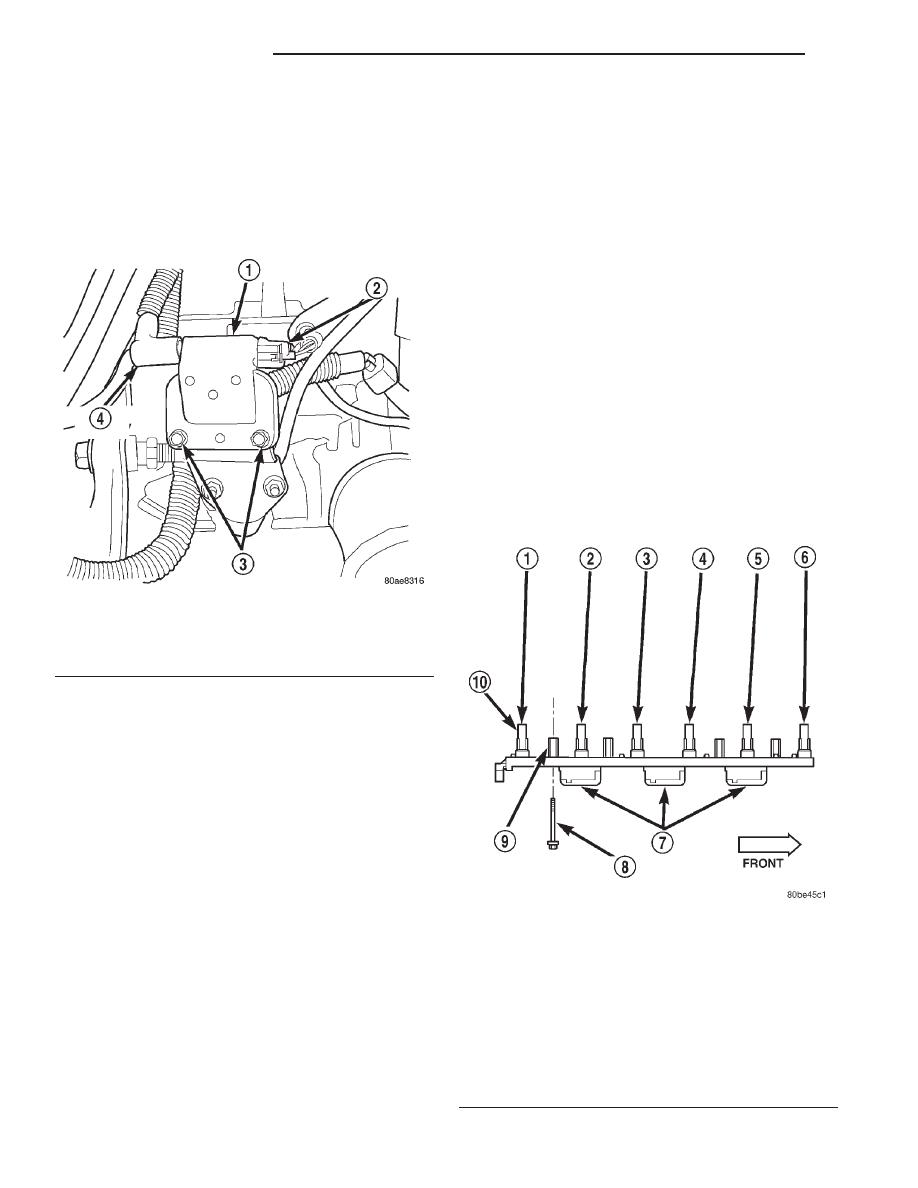Jeep XJ. Manual - part 96

IGNITION COIL—2.5L ENGINE
REMOVAL
The ignition coil is an epoxy filled type. If the coil
is replaced, it must be replaced with the same type.
On the 2.5L 4-cylinder engine, the ignition coil is
mounted to a bracket on side of engine (to rear of
distributor) (Fig. 20).
(1) Disconnect ignition coil secondary cable from
ignition coil.
(2) Disconnect engine harness connector from igni-
tion coil.
(3) Remove ignition coil mounting bolts (nuts are
used on back side of bracket on some coils).
(4) Remove coil from vehicle.
INSTALLATION
(1) Install ignition coil to bracket on cylinder block
with mounting bolts (and nuts if equipped). If
equipped with nuts and bolts, tighten to 11 N·m (100
in. lbs.) torque. If equipped with bolts only, tighten to
5 N·m (50 in. lbs.) torque.
(2) Connect engine harness connector to coil.
(3) Connect ignition coil cable to ignition coil.
IGNITION COIL—4.0L ENGINE
REMOVAL
A one-piece coil rail assembly containing three
individual coils is used on the 4.0L engine (Fig. 21).
The coil rail must be replaced as one assembly. The
bottom of the coil is equipped with 6 individual rub-
ber boots (Fig. 21) to seal the 6 spark plugs to the
coil. Inside each rubber boot is a spring. The spring
is used for an electrical contact between the coil and
the top of the spark plug. These rubber boots and
springs are a permanent part of the coil and are not
serviced separately.
(1) Disconnect negative battery cable at battery.
(2) The coil is bolted directly to the cylinder head.
Remove 4 coil mounting bolts (Fig. 22).
(3) Carefully pry up coil assembly from spark
plugs. Do this by prying alternately at each end of
coil until rubber boots have disengaged from all
spark plugs. If boots will not release from spark
plugs, use a commercially available spark plug boot
removal tool. Twist and loosen a few boots from a few
spark plugs to help remove coil.
(4) After coil has cleared spark plugs, position coil
for access to primary electrical connector. Disconnect
connector from coil by pushing slide tab outwards to
right side of vehicle (Fig. 23). After slide tab has been
positioned outwards, push in on secondary release
lock (Fig. 23) on side of connector and pull connector
from coil.
(5) Remove coil from vehicle.
Fig. 20 Ignition Coil—2.5L Engine
1 – IGNITION COIL
2 – ELECTRICAL CONNECTOR
3 – MOUNTING BOLTS (2)
4 – SECONDARY CABLE
Fig. 21 Ignition Coil Assembly—4.0L 6–Cylinder
Engine
1 – CYL. #6
2 – CYL. #5
3 – CYL. #4
4 – CYL. #3
5 – CYL. #2
6 – CYL. #1
7 – COILS (3)
8 – MOUNTING BOLTS (4)
9 – BOLT BASES (4)
10 – RUBBER BOOTS (6)
8D - 12
IGNITION SYSTEM
XJ
REMOVAL AND INSTALLATION (Continued)